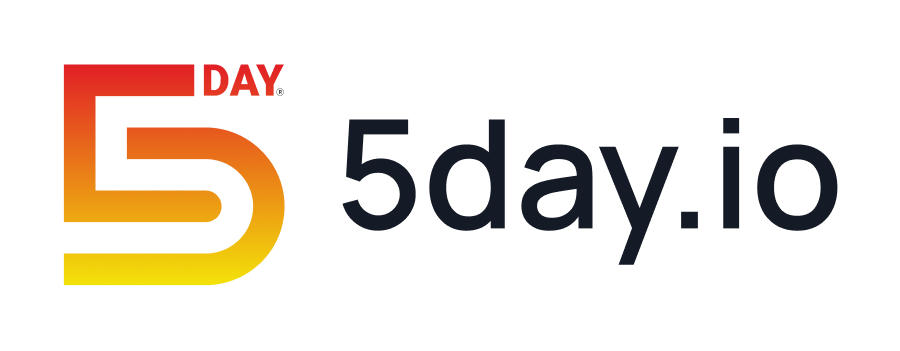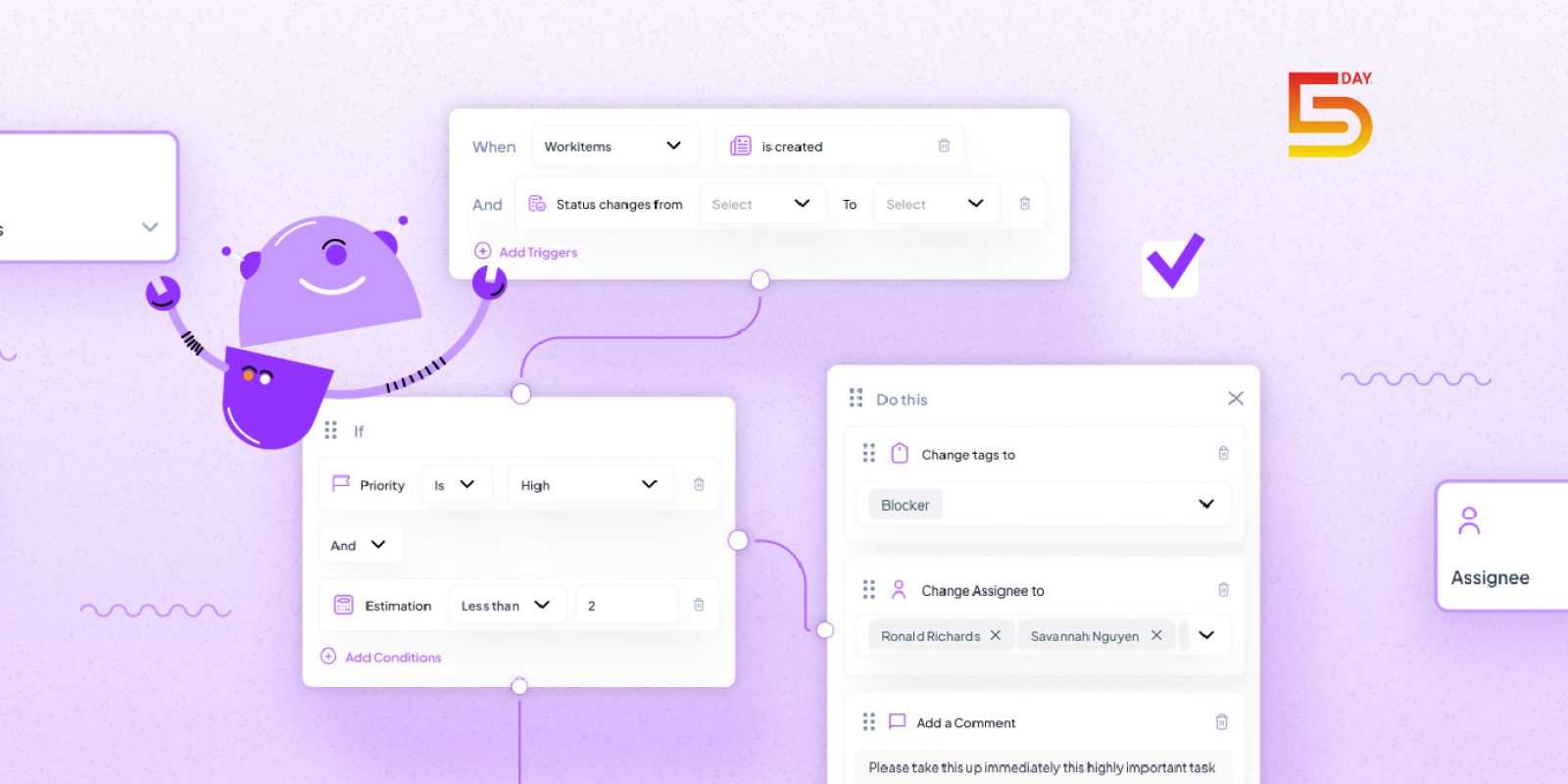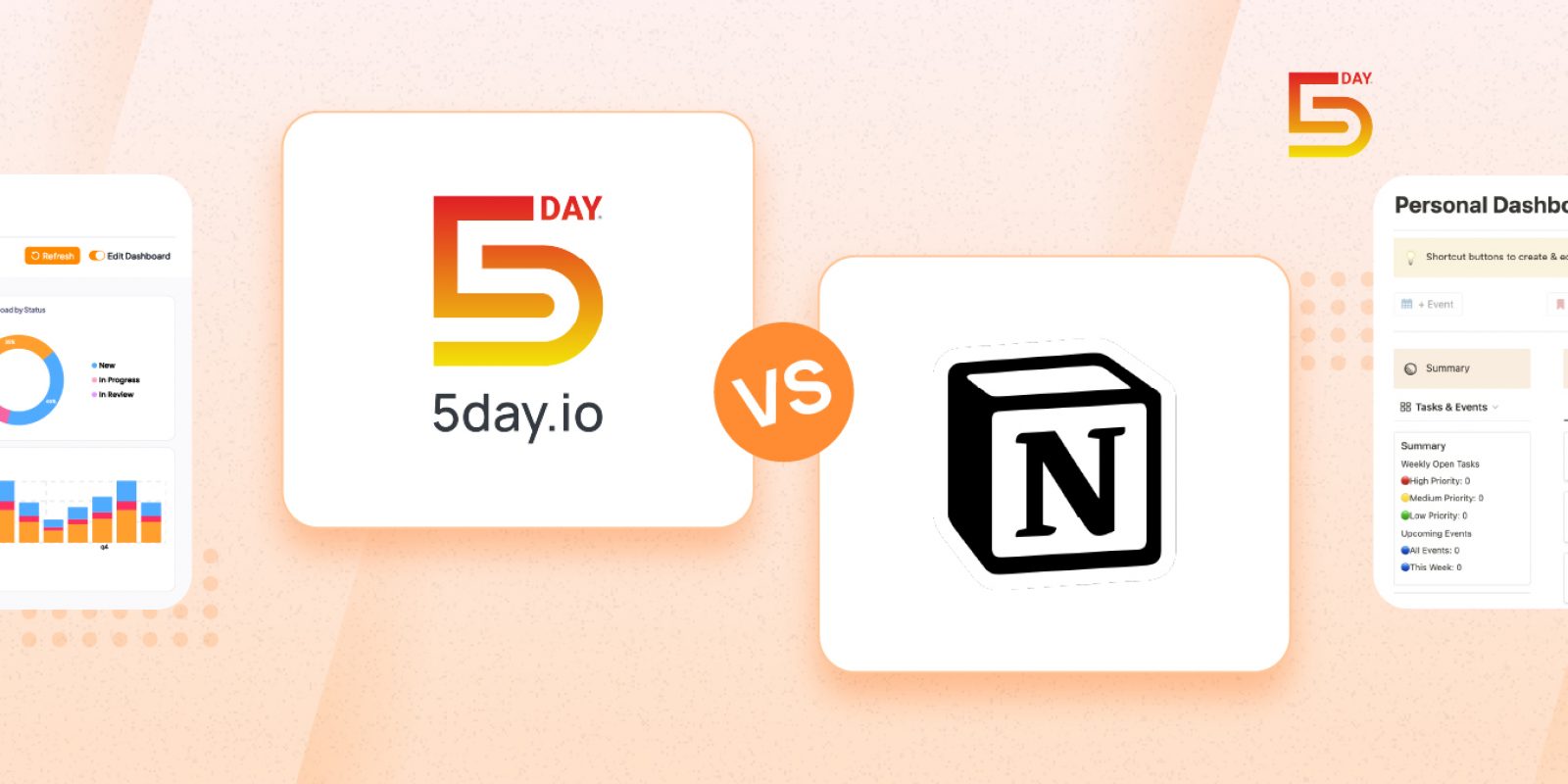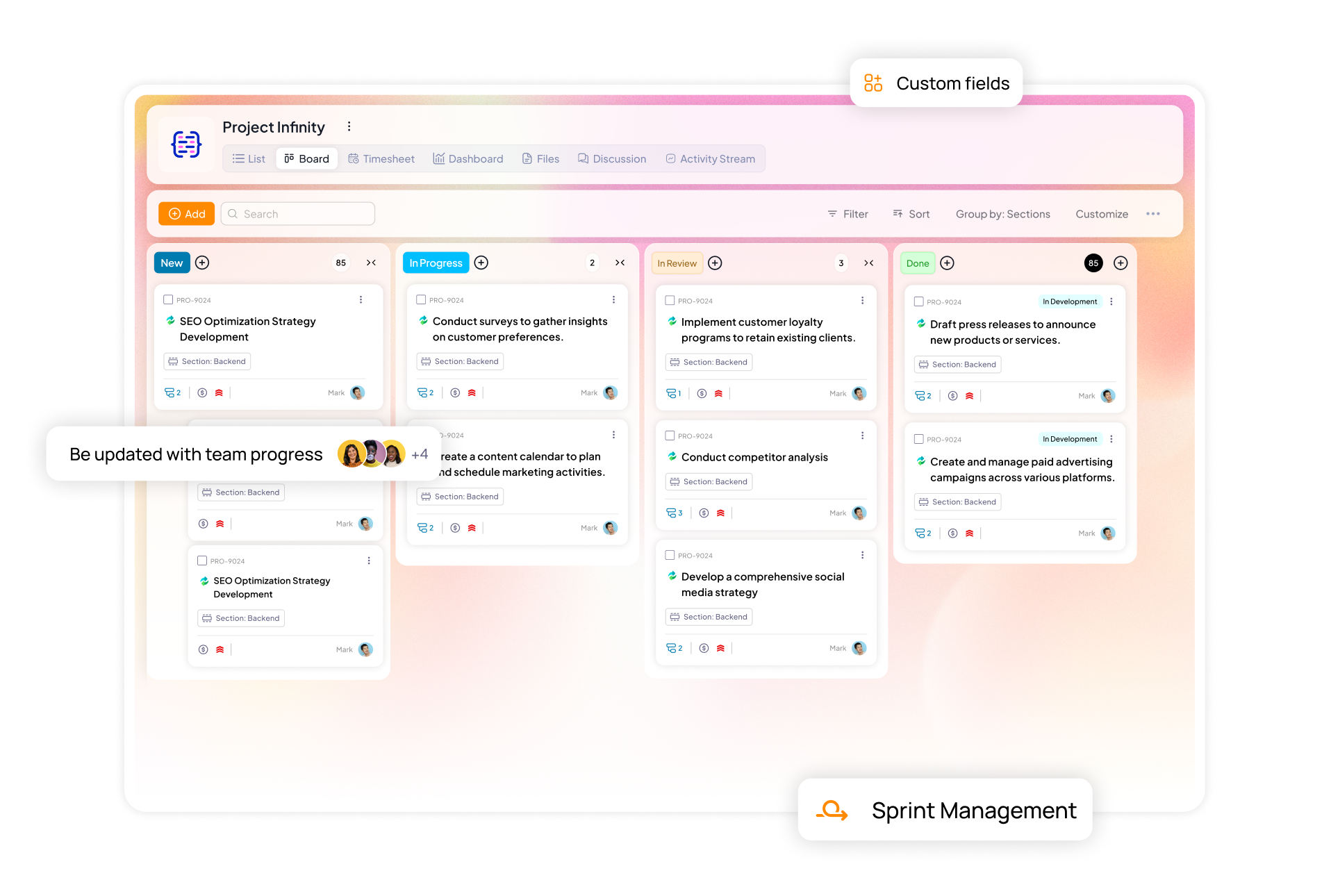The difference between a perfectly executed marketing campaign and one plagued by costly delays can be frequently chalked up to one core skill: stakeholder communication. It is more than a soft skill for experienced marketers; it is a lever for increasing efficiency and boosting marketing ROI.
In modern marketing, stakeholders are found beyond merely the client. They include your Sales team, the Product team, and the C-suite. While the list of internal dependencies is clear, the primary challenge is that even the slightest misalignment between these groups can take a massive toll on project deadlines and budgets.
This guide will provide a strategic framework to help you effectively steer stakeholder communication on marketing projects. We’ll also explore tactical best practices and tech solutions, such as project management software for the marketing team, needed to ensure every voice is heard and every decision is tracked.
The business value of stakeholder alignment
Once you’ve identified the symptoms and underlying causes of burnout, the next critical step is to shift from a reactive to a proactive approach. True leadership entails creating a system that fundamentally prevents burnout before it takes hold. In order to do that effectively, one must understand what is at stake.
Quantifying the costs of misalignment
A breakdown in communication with stakeholders in project management causes significant delays. This directly translates into:
- Financial waste: Misalignment directly causes budget overruns due to excessive rework and missed deadlines. This translates into tangible business losses such as high customer acquisition costs (CAC) and, more importantly, missed sales opportunities when campaign velocity is hampered
- Brand risk: Poorly aligned messaging between the marketing and other teams in the company confuses the customer. Whereas inconsistencies across multiple channels erode brand trust
- Squandered focus: Time spent chasing down approvals and updates leads away attention away from strategic work
Unpacking the roadblocks: Common stakeholder communication challenges for marketing teams
Even with the best intentions, unaddressed alignment gaps can derail stakeholder communication in marketing projects. To transition from reactive to proactive governance, leaders must first identify the most common roadblocks. Here are some of the most significant obstacles that prevent first-class communication with stakeholders in project management.
Silos and context collapse
Marketing projects depend on cross-functional inputs, be it legal reviews or product specifications. When information is scattered across email, chat, and separate documents, a silo is inevitable.
This leads to context collapse, i.e., when a key stakeholder in a project makes a decision without fully understanding the situation. The result is unnecessary rework or misaligned campaigns.
The approval bottleneck
A delay of, say, just two days in receiving approval on creative assets can cause a campaign to miss a critical launch window. Unsurprisingly, this directly affects the expected ROI.
It must be noted that the core issue is the approval system, which relies on manual email forwarding or tracking feedback across multiple platforms.
Managing different stakeholder requirements and expectations
The complexity of stakeholder alignment begins with managing vastly different communication needs. C-suite executives require a high-level KPI dashboard, while a copywriter demands detailed, paragraph-specific feedback. Manually managing these disparate communication modalities drains time and resources critical to strategic execution. Thus, undermining the efficiency gains of any strategy.
Communication principles for key stakeholders in a project
Effective stakeholder communication is ultimately governed by a set of core principles that drive clarity, trust, and accountability. Moving past ad-hoc reporting to a strategic system requires you to adhere to these core principles that govern how information is shared, received, and acted upon. Experienced marketers rely on these fundamentals to ensure their communication strategy is consistent and supports project success.
Listed below are the fundamentals that serve as the essence of successful stakeholder communication management.
Mutual value and reciprocity
Communication with stakeholders isn’t a one-way broadcast. To ensure effective communication, you must first identify the specific information and the metrics they need to perform their function. Then you must figure out how your communication supports it.
For example, it’s best to avoid inundating high-level project stakeholders with detailed task updates. They require concise, metric-driven reports linked to budget and ROI. Save the detailed technical feedback for the production team. It is also a good idea to create formal channels for receiving feedback. Contextual transparency
It is amply clear that the goal is to provide complete visibility while keeping things manageable. This allows all stakeholders in communication to understand the ‘why’ and ‘where’ of a project without having to sift through irrelevant details.
It is also a good idea to keep every decision and the final approved asset in an easily accessible location. A project management software for marketing team is a good option. And this centralized approach is critical for ensuring an accurate audit trail and preventing version control errors. You should also remember that instant, contextual updates allow stakeholders to adjust expectations or mobilize support.
Cadence and consistency
Unpredictability is a common source of project anxiety. This is easily addressed by implementing a predictable system for updates and feedback. It not only reduces ad hoc interruptions but also increases stability. This would reduce follow-ups and allow your team to focus on execution instead.
Best practices for streamlining marketing project communication
Graduating from strategic communication principles to daily implementation necessitates tactical discipline. This means there is no room for fragmented workflows. It also requires marketers to implement processes that eliminate bottlenecks and status ambiguity among other things. The goal is to have one source of truth for all marketing deliverables and discussions and streamlining marketing project communication.
Standardize and centralize the feedback loop
Revision and approval management is usually among the most significant drains on marketing efficiency. To change this, you need a standardized and centralized feedback loop that does away with the practice of gathering input through fragmented email chains and chats. This practice is essential for modern stakeholder communication management because it requires contextual feedback.
Your team should not receive vague emails; instead, comments should be pinned to the exact line of copy or marker on the specific design file. Such singular focus eliminates ambiguity and drastically reduces the scope for misinterpretation.
Automate status reporting
The most effective way to improve your stakeholder communication management is to use automation. The automation will ensure frequent, accurate updates are sent out sans any manual effort. This means implementing triggered updates within your project management software.
Say a task progresses from ‘Ready for Review’ or ‘Approved.’ This event should automatically trigger a contextual update for the relevant stakeholders. This allows your team to focus on execution while ensuring that all stakeholders in the communication process receive timely information.
Platforms such as 5day.io allow data to be collected once and displayed dynamically. This ensures customized communication with stakeholders in project management.
Put together the right tech backbone
To move from workdays brimming with scattered documents and endless threads to a cohesive, high-efficiency workflow, you need a dedicated project management software for the marketing team. Such a centralized hub is designed to handle cross-functional dependencies as well as campaign-specific approval flows.
Specifically, using a flexible project management software designed for collaborative execution enables marketers to consolidate briefs, creative assets, etc. in a single contextual space. This not only streamlines communication but also reduces human error.
The essential tool stack for seamless stakeholder communication
For marketers, strategic intent and strong principles are insufficient to ensure success. You must also have the right tools to put the intents and plans into action. To that end, you can integrate a simple yet effective tool stack that streamlines stakeholder communication into a practically entirely automated process.
The centralization imperative: Tools you need for clarity
Fragmentation is the most significant barrier to effective communication with stakeholders. Consider this: project briefs exist in one app, discussions occur in another, and files are stored in a third. With a foundation so divided, stakeholder communication management is bound to be a drain on resources.
So, all you need to remember is that your essential tool stack does not require only individual, standalone apps. What you need is a single, unified platform that serves as your communication hub.
Having said that, here are the three essential categories of tools that you need:
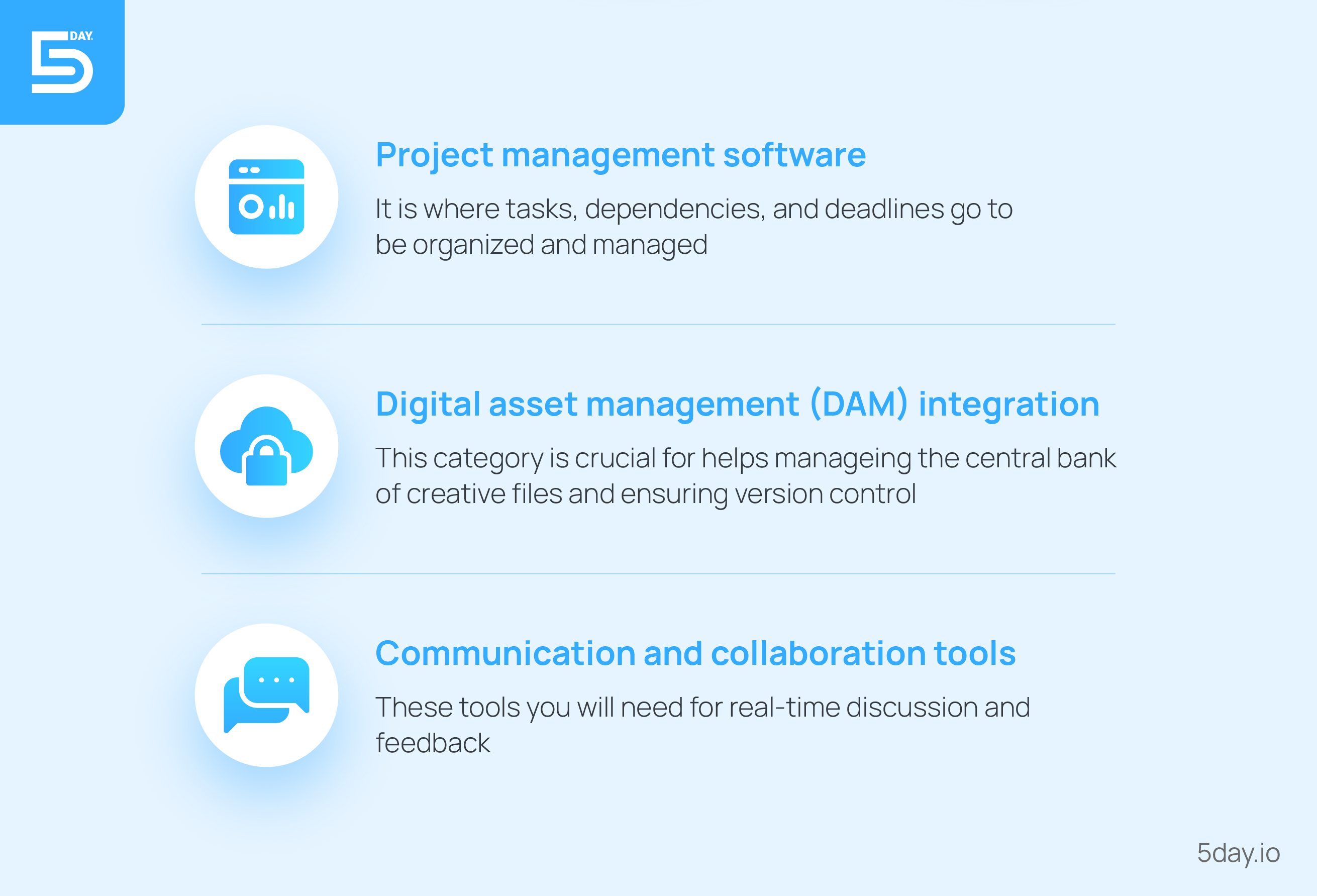
The non-negotiable features
When selecting a centralized platform, the evaluation must extend beyond the offering’s basic feature set. This is key to realizing long-term effectiveness of the platform you choose.. And to ensure effective communication with stakeholders in project management, it’s important to consider the following features and capabilities:
- Contextual collaboration: It keeps all conversations anchored to the work, removing confusion about which version or piece of feedback is the most recent
- Customizable access and permissions: The tool should enable you to grant precise access to specific projects or tasks. This protects data while also keeping key stakeholders informed
- Dynamic reporting: The tool of your choice should offer dashboards and analytics that provide both high-level progress charts and granular workload reports
How 5day.io delivers communication excellence
5day.io creates a centralized source of truth, reducing communication friction. Designed for fast-moving teams, it offers the right balance of robust features and a minimal learning curve. 5day.io also helps you maintain control by centralizing your entire marketing project workflow in one place. This approach ensures project stakeholders are always aligned and informed.
FAQs
What is stakeholder communication management in a marketing context?
Stakeholder communication involves identifying all individuals and groups in an organization and its partners involved or impacted by a marketing campaign. Then, you systematically plan, execute, and monitor all information flow to ensure that the stakeholders’ needs and expectations are met.
Why is communication with stakeholders in project management so important for marketing ROI?
Miscommunication causes missed launch dates, misaligned messaging, and a variety of other issues. Effective communication with stakeholders in project management helps reduce errors. It ensures projects stay within budget and meet market deadlines, thereby protecting marketing ROI.
How often should I update my stakeholders in communication?
Your communication plan should include a frequency, or cadence, that is appropriate for their influence on and interest in the project. High-interest stakeholders may require daily automated status updates, whereas high-level executives may only require a formalized weekly or biweekly summary report.
What is the biggest mistake marketers make regarding stakeholder communication?
The biggest mistake in this situation is relying on email for project-critical feedback and approvals. Email distorts context and slows critical decision-making.
How can I measure the success of my stakeholder communication management plan?
Metrics based on operational efficiency would be used to assess success here. Consider factors such as reducing project rework cycles, bottleneck resolution, etc. A high level of adoption among your team would also indicate success.
